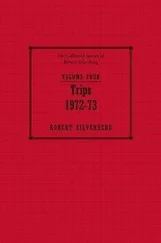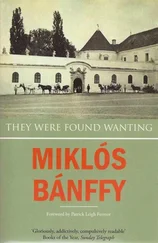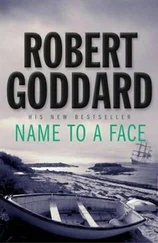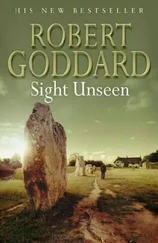‘Secrecy, maybe? Clem could be sure no one in our family – or in Cowes, come to that – was going to be able to read letters written in Danish.’
‘But what was there to be secret about?’
‘That’s what I tried to find out. I hit a brick wall at first. Then I did what I should have done earlier: look for Nydahl on the Web. He gets a single mention, in one of the hundreds of Anastasia-related sites. Needless to say, there are a lot of people out there in cyberspace convinced she was the genuine article and the DNA results were faked. I put out some feelers and Werner responded. It was my name that did it. He’d been trying to discover who Clem Hewitson was for years because of his father’s account of Clem’s mysterious participation in the Anna Anderson court case. Apparently, the judges wanted to hear testimony from Nydahl about Dagmar’s attitude to the claimant. Nydahl said he was too ill to appear, but suggested Clem could tell them all they needed to know. Otto Straub, like most other observers, couldn’t understand what this retired British police officer had to do with it. And they never found out. Because, when Clem came over, he was heard in camera . To this day, no one has any idea what he said.’
They left the café and, at Marty’s suggestion, walked up to the ring road skirting the city centre, on the other side of which, beyond a stretch of landscaped greenery, stood Hamburg’s courts complex: three mansarded neo-Gothic blocks, with modern extensions. The view was blurred by mist and sleet, dampness deepening the prevailing chill, the stud-tyred traffic rumbling rhythmically past.
‘That’s where it all happened in the Anna Anderson trials,’ said Marty. ‘I expect you’ve forgotten the ins and outs of her story. I certainly had. She burst on to the public stage in 1922 and spent the next ten years or more badgering members of the Romanov family for recognition and living off supporters who were either genuine believers or after what they hoped to get out of her. Berlin, Paris, New York, assorted German Schlosses : she was always on the move, charming and convincing some, offending and alienating others. She also fitted in a lot of physical and mental illness. There were several interludes in hospitals and asylums along the way. Finally, in 1938, she instituted legal proceedings in Berlin to claim any money left by the Tsar in German bank accounts. There was certainly some, possibly a lot. If she’d succeeded, she’d no doubt have moved on to other countries. The Bank of England, for instance, was rumoured to be holding a sizeable sum deposited by the dead but officially merely missing Tsar.’
‘I do remember that,’ said Eusden. ‘The Tsar’s missing millions.’
‘Yeah. Well, pounds in the bank or pie in the sky, we’ll never know now. The case was chucked out. Anna’s lawyers appealed. The appeal was suspended because of the outbreak of war. The court papers ended up in the Soviet sector, which effectively blocked all progress. Her lawyers eventually decided to sue the Romanovs for recognition. The chosen defendant was a great-niece of the Tsarina, Barbara, Duchess of Mecklenburg, who happened to live in Germany, making her a convenient target. Hamburg suited all parties as a venue. The case opened in January 1958 and dragged on, thanks to various delays, adjournments and illnesses, for three years. In the end, Anna’s claim was dismissed. Her lawyers appealed – again. Another three years passed waiting for the appeal to be heard and yet another three actually hearing it. It was finally turned down in February 1967. All this time, Anna had been leading the life of an eccentric recluse in a chalet in the Black Forest with half a dozen dogs and two dozen cats. She never came to court. One of the judges went to question her during the first trial, little good that it did him. A year after losing the appeal, she shoved off to the States and married an oddball well-wisher called Jack Manahan, Professor of East European history at the University of Virginia. She spent the rest of her days as Mrs Manahan in Charlottesville, Virginia. A lot of people, including her husband, went on believing she was Anastasia. But the DNA experts tell us she was actually a Polish factory worker called Franziska Schanzkowska, who exploited a physical resemblance to Anastasia to reinvent herself as a Russian princess – with astonishing success.’
‘Did Clem ever say whether he thought she was genuine or not?’ asked Eusden.
‘Not that I can recall.’
‘Do you think he told the judges what he thought?’
‘Must have, I suppose. If they asked him. But we don’t know what they asked him.’ Marty squinted across at the court building. ‘Or what he said in reply.’
They retreated through the smart shopping streets of the city centre to the Jungfernstieg, on the shores of Hamburg’s answer to Lake Geneva: the Binnenalster. Marty steered Eusden into the imposing Hotel Vier Jahreszeiten for mid-morning coffee and cake. He was still making up for his enforced fast, he explained, as he forked down a gooey slice of torte. ‘Besides,’ he went on, ‘this is where Anna’s legal team put up prize witnesses and either licked their wounds or toasted their minor triumphs. I don’t know if Clem stayed here. Depends who was paying his bill, I suppose.’
‘And who might’ve been?’ asked Eusden.
‘Good question. According to Werner, his father said Nydahl’s testimony was called for after the Danish government turned down a request from the court for access to a document known as the Zahle Dossier. Herluf Zahle was Danish ambassador to Germany when Anna first came forward. King Christian instructed him to establish whether she really was Anastasia. I imagine he was trying to decide what line to take on his aunt Dagmar’s behalf if there was any substance to the claim. Anyway, Zahle seemed to think Anna was the real deal at first. He covered all her medical expenses – she was seriously ill with TB for several years – and helped her out on numerous occasions. He only backed off when the Schanzkowska allegation surfaced in a Berlin newspaper and even then he made it obvious he didn’t believe it. The dossier contained all his papers relating to the case. Crucial material, which the Danes held back. Who knows why? Nydahl was a friend of Zahle’s and the courtier charged with looking after Dagmar’s interests. He must have known what was in the dossier. Hence the attempt to get him to testify. But he pleaded illness, which may have been genuine, since he died the following year. Clem was his chosen substitute. A bizarre choice on the face of it. Strings must have been pulled somewhere, though, to ensure he was heard in camera. Clem obviously was the natural choice. For reasons you and I can only guess at. Werner, on the other hand, will probably know what those reasons were, as soon as he has the letters translated. Unless he’s done a crash course in Danish on the sly and can read them himself, which I wouldn’t put past him.’
‘Who’s he meeting off the plane at Frankfurt?’
‘An eccentric American millionaire who’s distantly related to Jack Manahan and is prepared to pay through the schnozzle for evidence that Jack’s wife was the true-blue Anastasia.’
‘But she can’t have been. The DNA evidence ruled that out. You said so yourself.’
‘Ah, Richard, you always were too much of a determinist.’ Marty gave him a benignly superior smile. ‘She can be whatever people persuade themselves to believe she was. The DNA technique they used back in the early nineteen nineties has been discredited now, anyway. It produced far too many false positives and false negatives for comfort. Besides, why trust DNA results which you and I, and everyone else bar a couple of boffins in lab coats, haven’t a hope of understanding over hard physical, visible evidence? Anna Anderson was the wrong height, shoe size, ear size, to be Franziska Schanzkowska, but right for Anastasia. She had a scar on her shoulder exactly where Anastasia had a mole removed. She had the same deformity of the big toe as Anastasia and her sisters. Besides, everyone who met her agreed she was an aristocrat, a difficult trick for a Polish factory worker to pull off. And let’s not get into all the things she knew that only Anastasia could know. A graphologist testified at the trial that there was no doubt Anna’s handwriting and Anastasia’s were those of the same person.’
Читать дальше












